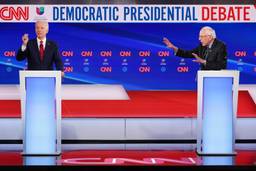At Northwestern University in the mid-1990s, the journalism professor with the most devoted student following was an understated teacher who said that substantive writing and reporting isn’t everything, it’s the only thing. Alternately despondent and sanguine, he reminded me of Grady from the book “Wonder Boys” when he told us that he spent weekends drinking in his closet and that he corrected papers in green ink because “green is the color of hope.”
Professor Kupetz has since left Northwestern, and journalism is today running dangerously low on his emerald-hued optimism. Judging by the fatalistic declarations after this month’s collapse of newspapers in Denver and Seattle, the industry is morosely drinking in its closet, wondering what went wrong.
Most newspaper post-mortems insist that decreased ad revenues brought on by the Internet and the recession caused journalism’s problems, not self-inflicted wounds. If that was entirely accurate, then readers might lament newspapers’ decline as a loss of must-read content. Instead, Pew polls find “many Americans wouldn’t care a lot if local papers folded.”
In light of that, allow me to use these dwindling column inches to float an alternate hypothesis: While technological and economic forces certainly battered newspapers, journalism also delivered a one-two punch to its own jaw.
First, financially strapped newspapers undermined their comparative advantage by replacing audience-attracting local exclusives with cheaper national content. Then, the providers of that national content diverted resources from tough-to-report investigative journalism that builds loyal readership and into paparazzi-like birdcage liner that unconvincingly portrays politicians, CEOs and their minions as celebrities.
“In place of comprehensive, complex and idiosyncratic coverage, readers of even the most serious newspapers were offered celebrity and scandal, humor and light provocation,” says journalist-turned-director David Simon, whose HBO series “The Wire” examined this trend.
The most preventable tragedy was the deterioration of quality. Downsized local publications were all but forced to rely on more national content, but that content didn’t have to become so vapid.
Beltway scribes didn’t have to miss the Iraq War lies or the predictive signs of the Wall Street meltdown. Election correspondents weren’t compelled to devote four times the coverage to the tactical insignifica of campaigns than to candidates’ positions and records, as the Project for Excellence in Journalism found. Business reporters didn’t need to give corporate spokespeople twice the space in articles as they did workers and unions, as a Center for American Progress report documents. National editors weren’t obligated to focus on “elevat(ing) the most banal doings” in the White House to “breaking news,” as the New York Times recently noted.
But that’s what happened. Rather than investing in the valuable steel and concrete of hard reporting, national news outlets began printing the most worthless kind of commercial paper – rumors, personality profiles and other such speculative derivatives that consumers could find elsewhere. News, in short, mimicked finance: Just as Wall Street made bets on bets with credit default swaps and then watched investors bolt, print journalism mass produced gossip about gossip, and now sees its audience flee.
Can we blame readers? If local news is gone and national news aims to celebrify Washington, can we really fault Americans for paying attention to chatter about Hollywood hardbodies rather than about D.C.’s paunchy pocket protectors?
I’d say no. If it’s a choice between a Filmdrunk.com scoop on Vin Diesel’s latest movie and a local reprint of the Washington Post’s A1 cliche on the “hard-charging approach” and dating strategy of mid-level Obama aide Jim Messina, most of us will (understandably) tune into the B-movie star, not the bureaucrat – and neither Google nor AIG have anything to do with that decision. Until the news industry acknowledges that truth – until it relearns Professor Kupetz’s lessons – no rationalization, green ink, or private benders will save journalism.
David Sirota is an award-winning investigative journalist and an In These Times senior editor. He served as speechwriter for Bernie Sanders’ 2020 campaign. Follow him on Twitter @davidsirota.








